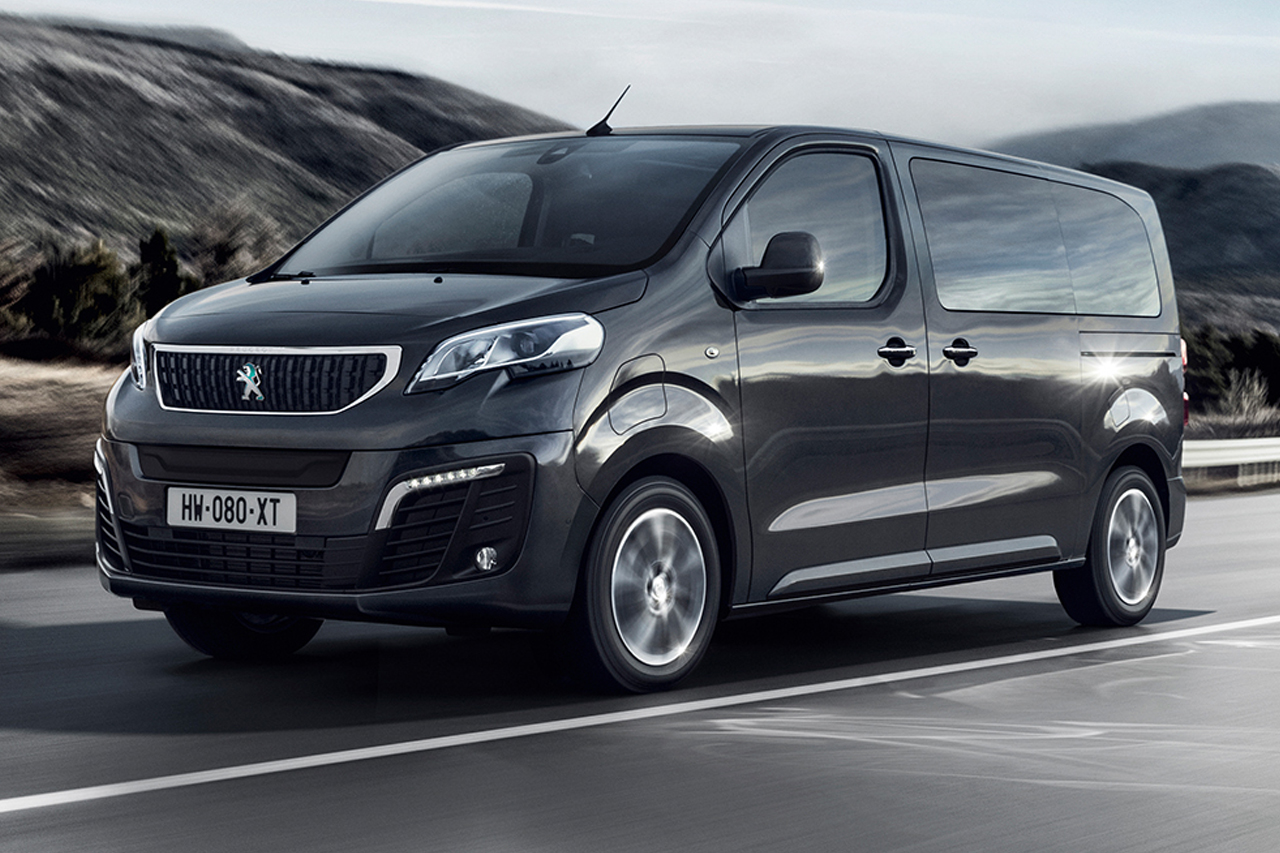
For large families wishing to convert to electric, Citroën offers the e-Spacetourer, which offers eight seats and an interior volume unchanged compared to thermal models. Constraints: the high price and limited trips to short distances.
Test car: Citroën SpaceTourer M 100% ëlectric Shine 75 kWh
|
From€ 69,150
no bonus |
At Citroën, the range of electric vehicles extends from one extreme of the range to the other, with on one side the little Ami without a license and on the other the e-Spacetourer, an electrified version of the van released. in 2016, itself derived from the utility Jumpy. The one who shares his technical underwear with the cousins Peugeot e-Traveler and Opel Zafira-e Life is even more suitable for large families than the little brother ë-Berlingo, since it offers eight seats and a trunk volume of up to to 989 l in size XL behind the third row of seats (603 l in size M). Who says better ? In addition, thanks to the implementation of batteries under the floor, the interior volume of this electric van remains identical to that of the versions equipped with a Diesel engine.

The Citroën ë-Spacetourer is available in three body lengths: 4.60 m (XS), 4.95 m (M) and 5.30 m (XL). Note that, whatever the size, the two rows of rear seats (type 60-40) are sliding, while each seat, even that of the front passenger, can be placed on a shelf. To free up cargo space and have a flat floor, these seats are also retractable. At last, two sizes of batteries are available, 50 kWh and 75 kWh, the larger one, however, is not available in XS bodywork. Aesthetically, this electric version of the herringbone van is distinguished only by its blue “ë” logos, placed on the grille and tailgate.
Citroën ë-Spacetourer price
While waiting for the XS body, the ë-Spacetourer is available from € 55,900 in size M with the 50 kWh battery and the Feel finish. The choice of the 75 kWh battery inflates the price by € 6,000, while the XL body is charged € 1,000 more. As for the Shine finish, it claims € 7,250 more than the Feel. Thus, an XL version with a 75 kWh battery in Shine finish increases the bill to € 70,150!
Only the entry-level Feel proposals fitted with the small 50 kW battery benefit from a bonus of € 2,000. Our test model M with 75 kW battery and Shine finish, displayed at € 69,150, is therefore not entitled to any help and request, for equal length and finish, 15 800 € more than the BlueHDi 180 EAT8 version, “Malussée” for its part in the amount of € 7,851.

The Feel finish equipment already offers the essential, with in particular the two sliding side doors, air conditioning, cruise control, rear parking aid or even 17-inch alloy wheels. The Shine level adds a dose of comfort integrating among others the reversing camera, the leather upholstery, the glass roof or the opening rear window. Finally, note that two finishes dedicated to professionals, Business and Business Lounge, are also offered. The Business Lounge emphasizes space and wishes to display a certain standard by reducing the number of passengers to six, with four rear seats with armrests, independent and reversible.
Autonomy and charging time
With the small 50 kWh battery, the ë-Spacetourer’s WLTP combined cycle autonomy is announced between 211 and 221 km depending on the equipment. The 75 kWh of our model theoretically offers a comfortable extension, promising between 303 and 317 km of autonomy in the combined cycle. In reality, reaching this 300 km mark will require a lot of eco-driving efforts and especially not to venture on the highway. It must be said that in terms of aerodynamics our mount is closer to the truck than to the car. And its mass of 2,065 kg empty does not help.

While we left with a full battery, the average consumption displayed by the on-board computer was 29.4 kWh per 100 km and the remaining range was 160 km following a test run of 72 km. Consumption greater than that announced in the WLTP cycle (between 26.7 and 27.8 kWh / 100 km) and which would bring real autonomy back to around 250 km. Note that our trip had very few expressways (limited to 110 km / h) and that we had no passengers or loads. Suffice to say that, on the highway and well accompanied, the range risks melting like snow in the sun! On the power supply side, charging to 100% takes more than 46 hours on a standard domestic socket (10:40 p.m. on a reinforced 16A socket) and 7:40 a.m. on a three-phase 32 A wallbox (with optional 11kW on-board charger). On a fast terminal, recharging to 80% would take only 45 minutes.
Driving

Despite its generous dimensions and its utility profile, the Citroën electric van offers a fairly easy handling which should not frighten the customer uninitiated to this type of vehicle. The electric motor undoubtedly contributes to this ease of use by the smoothness of operation and fluidity that it brings. The silence on board is also very appreciable compared to thermal models; even air noises remain contained. Of course, with more than two tons to move, the 136 hp is a little to the penalty. Despite everything, the performance remains sufficient in absolute terms, and we can always select the Power driving mode if we want more lively acceleration. On long journeys, however, we recommend that you favor Normal or Eco modes, which consume less energy because they limit the power and torque available (109 hp and 210 Nm or 82 hp and 180 Nm respectively).

The road behavior also benefits from this mode of propulsion thanks to the installation of the batteries under the floor which allows the van to lower its center of gravity and turn almost flat in the bends. The suspension also appears rather well calibrated because, although quite firm and a little “jumping” on small shocks at low speed (the fact that we were driving empty does not help), it valiantly withstands the majority of the irregularities of the pavement and ultimately provides completely satisfactory comfort. Unfortunate that the steering, very assisted, offers very little feedback to the driver and gives the impression of being disconnected from the road. The most confusing remains this tendency to be “sticky” in bends, being able to sometimes remain on the angle even when one released the steering wheel. Finally, as on the ë-Berlingo, braking is one of the faults on which we can curse, it being quite difficult to dose because of a very uneven pedal consistency depending on the situation.
On board





Competetion
The main competitors of the ë-Spacetourer are to be found within the Stellantis group itself, with the cousins Peugeot e-Traveler and Opel Zafira-e Life, while the new Fiat Ulysse, which will enter the market at the beginning of the year 2022, could also acquire an electric variant. The Toyota Proace Verso Electric, although external to the group, is also very close to the Stellantis models since shares the same platform and more generally the same technical sheet. In terms of prices, the e-Spacetourer is in the middle, between the Zafira-e Life (from € 54,500) and e-Traveler (from € 56,700).


In the premium segment, we also find the Mercedes EQV, but this one charges a high price for its luxurious interior and its greatest performance, with a minimum price of 74,240 €. Finally, we could cite the Nissan E-NV200 Evalia, less expensive (from € 43,100), but also smaller and less roomy, while it can carry seven optional passengers (five original).
Find the test report, prices, equipment and technical sheet on the next page.















